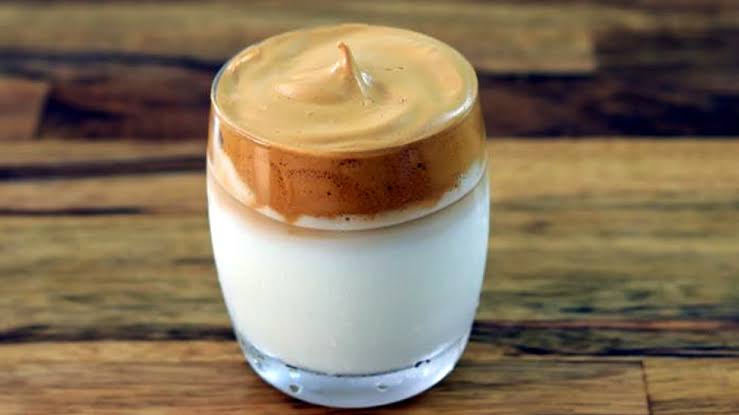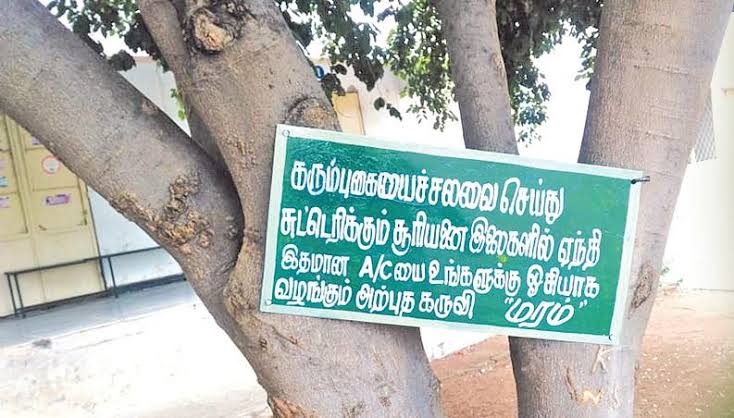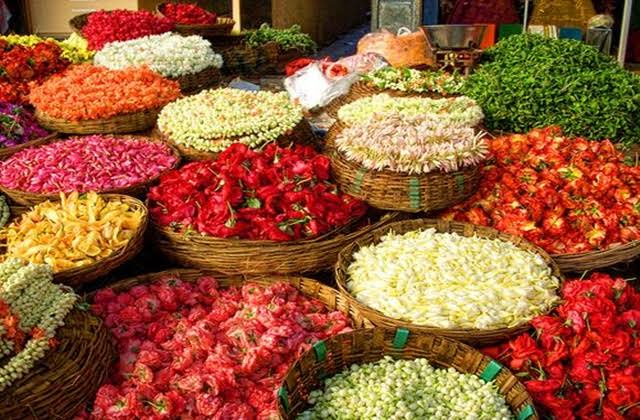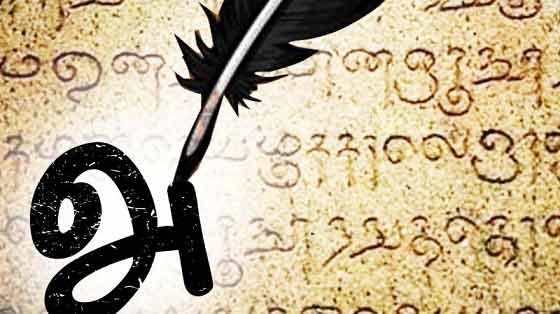இந்திய மயில் Indian peafowl
திணை: விலங்கு
தொகுதி: முதுகுநாணி
வகுப்பு: பறவை
வரிசை: கல்லிபார்மஸ்
குடும்பம்: Phasianidae
துணைக்குடும்பம்: Phasianinae
பேரினம்: Pavo
இனம்: P. cristatus
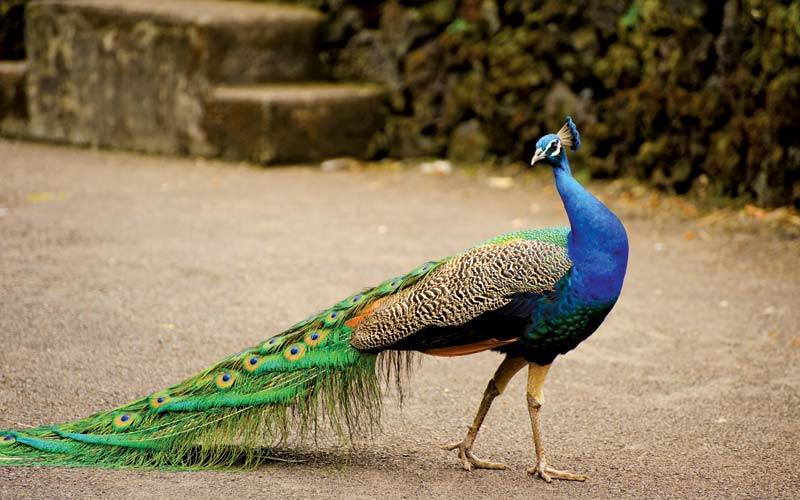
மயில் எனப் பொதுவாக அழைக்கப்படுகின்ற, இந்திய மயில் (Indian peafowl, [Pavo cristatus]) அல்லது நீல மயில் இந்தியத் துணைக்கண்டத்தைப் பூர்வீகமாகக் கொண்ட பறவைகளில் ஒன்றாகும். இது பசியானிடே குடும்பத்தைச் சேர்ந்த பறவையான மயிலின் இரு பேரினங்களுள் ஒன்றான, பேவோ (Pavo) பேரினத்தினுள் அடங்கும், cristatus என்ற இனத்தைச் சேர்ந்த ஒரு பறவையாகும். இவற்றின் பூர்வீகம் இந்தியத் துணைக்கண்டமாக இருப்பினும், இவை உலகின் பல பாகங்களில் மனிதர்களால் கொண்டு செல்லப்பட்டதால் அங்கும் பரவி காணப்படுகின்றன. பேவோ பேரினத்தினுள் வரும் மற்றொரு இனமான muticus பச்சை மயில் என அழைக்கப்படும். இவை இரண்டும் தென்னாசியாவிற்குரிய பெரிய வண்ணமயமான கோழி இனவகைப் பறவைகளாகும்.
மயில்களில் பலவகை உண்டு .குறிப்பாக இந்திய மயில் (Paro cristarus) மற்றும் பச்சை மயில் (Pavo mmuticus) ஆகிய மயில் வகைகள் பிரபலமானவை.இந்திய மயிலை நீல மயில் என்பர். இது இந்தியா, இலங்கை ஆகிய நாடுகளில் மட்டுமே காணப்படுகிறது. பச்சை மயில் பர்மா மற்றும் தெற்கு ஆசியப் பகுதிகளில் காணப்படுகிறது.வெண்மை நிற மயில்களும் பரவலாகக் காணப்படுகிறது.
பச்சை நிற மயில் அழியும் அபாயத்தில் உள்ளது.இதே போல் இந்திய மயில்களும் அழிந்து கொண்டிருக்கின்றன.மயிலை ஆங்கிலத்தில் பீக்காக் என அழைக்கிறோம்.இது ஆண் மயிலை மட்டுமே குறிப்பதாகும்.ஆண் மற்றும் பெண் மயில் இரண்டையும் சேர்த்து பீபௌல்(Peapowl) என ஆங்கிலத்தில் அழைக்கின்றனர்.
இந்தியாவின் தேசியப் பறவை மயில் ஆகும். மயிலின் அழகைக் கண்டு ரசிக்காதவர்கள் யாரும் இருக்க முடியாது.மயில் இந்தியாவின் தேசியப் பறவையாக 1963 ஆம் ஆண்டில் அறிவிக்கப்பட்டது.
ஆண்மயிலின் தலைப்பகுதி

ஆண் மயிலின் கழுத்து, மார்பு, வயிறு பளபளக்கும் கருநீல நிறத்திலும், இறக்கைகளில் வெள்ளையும், பழுப்புமாக இறகுகள் போன்ற பட்டைகளும் இருக்கும். நீண்ட தோகை பச்சை நிறத்திலும், பளபளக்கும் கருநீல வட்டங்களையும் கொண்டிருக்கும். தோகையில் உள்ள சில சிறகுகளின் முனை பிற வடிவத்தில் இருக்கும். ஆண் மயில் உருவில் பெரியவை. மயிலின் அலகின் முனையில் இருந்து வால் சிறகு வரை சுமார் 100-115 செ. மீ. நீளமும், நன்கு வளர்ந்த முதிர்ந்த பறவைகளில் முழுவதுமாக வளர்ந்த தோகையின் கடைசி முனை வரை கணக்கிட்டால் சுமார் 195-225 செ.மீ. நீளமும் கொண்டிருக்கும். இதன் எடை சுமார் 4-6 கிலோ இருக்கும். தோகையில் சுமார் 200க்கும் மேற்பட்ட சிறகுகள் இருக்கும். எனினும் வால் சிறகுகள் 20 மட்டுமே.
பெண் மயில்

பெண் மயிலுக்கு நீண்ட தோகை கிடையாது. இவற்றின் கழுத்து, பளபளக்கும் பச்சை, வெள்ளை, கருப்பு ஆகிய வண்ணங்களைக் கொண்ட செதில் வடிவ இறகுகளைக் கொண்டும், வயிற்றுப்பகுதி வெள்ளையாகவும், இருக்கும். இவை ஆண் மயில்களை விட உருவில் சிறியவை. சுமார் 95 செ.மீ. நீளமும், 2.75-4 கிலோ எடையும் உடையவை. கோழி வகைப் பறவைகளிலேயே மயில்கள்தான் உருவில் பெரிதாகவும், எடைமிக்கதாகவும் விளங்குகின்றன[5],[6].
மயிலின் ஆண், பெண் இரண்டிற்குமே தலையில் கொண்டை இருக்கும். ஆண் மயிலின் முகத்தில் கண்ணின் மேலும், கீழும் வெள்ளை நிறத்தில் பிறை வடிவில் அடர்ந்த சிறகுகள் இல்லாத பட்டைகள் போன்ற இறகுகள் இருக்கும். பெண் மயிலில் முகத்தில் கண்களுக்கு மேல் வெள்ளை நிறப் பட்டையும், முகத்தின் பக்கவாட்டிலும், கழுத்து ஆரம்பிக்கும் பகுதியிலும் வெள்ளையாக இருக்கும்.
Indian peafowl
The Indian peafowl (Pavo cristatus), also known as the common peafowl, and blue peafowl, is a peafowl species native to the Indian subcontinent. It has been introduced to many other countries. Male peafowl are referred to as peacocks, and female peafowl are referred to as peahens, although both sexes are often referred to colloquially as a “peacock”.
Indian peafowl display a marked form of sexual dimorphism. The peacock is brightly coloured, with a predominantly blue fan-like crest of spatula-tipped wire-like feathers and is best known for the long train made up of elongated upper-tail covert feathers which bear colourful eyespots. These stiff feathers are raised into a fan and quivered in a display during courtship. Despite the length and size of these covert feathers, peacocks are still capable of flight. Peahens lack the train, have a white face and iridescent green lower neck, and dull brown plumage. The Indian peafowl lives mainly on the ground in open forest or on land under cultivation where they forage for berries, grains but also prey on snakes, lizards, and small rodents. Their loud calls make them easy to detect, and in forest areas often indicate the presence of a predator such as a tiger. They forage on the ground in small groups and usually try to escape on foot through undergrowth and avoid flying, though they fly into tall trees to roost.
The function of the peacock’s elaborate train has been debated for over a century. In the 19th century, Charles Darwin found it a puzzle, hard to explain through ordinary natural selection. His later explanation, sexual selection, is widely but not universally accepted. In the 20th century, Amotz Zahavi argued that the train was a handicap, and that males were honestly signalling their fitness in proportion to the splendour of their trains. Despite extensive study, opinions remain divided on the mechanisms involved.
The bird is celebrated in Hindu and Greek mythology, and is the national bird of India. The Indian peafowl is listed as of Least Concern on the IUCN Red List.
Taxonomy and naming
Carl Linnaeus in his work Systema Naturae in 1758 assigned to the Indian peafowl the technical name of Pavo cristatus (means “crested peafowl” in classical Latin).
The earliest usage of the word in written English is from around 1300 and spelling variants include pecok, pekok, pecokk, peacocke, peacock, pyckock, poucock, pocok, pokok, pokokke, and poocok among others. The current spelling was established in the late 17th century. Chaucer (1343–1400) used the word to refer to a proud and ostentatious person in his simile “proud a pekok” in Troilus and Criseyde (Book I, line 210).

The Sanskrit, later Pali, and modern Hindi term for the animal is maur. It is debated that the nomenclature of the Maurya Empire, whos first emperor Chandragupta Maurya was raised and influenced by peacock farmers, was named after the terminology.
The Greek word for peacock was taos and was related to the Persian “tavus” (as in Takht-i-Tâvus for the famed Peacock Throne). The Ancient Hebrew word tuki (plural tukkiyim) has been said to have been derived from the Tamil tokei but sometimes traced to the Egyptian tekh.In modern Hebrew the word for peacock is “tavas”. In Sanskrit, the peacock is known as Mayura and is associated with the killing of snakes.
Description
Peacocks are a larger sized bird with a length from bill to tail of 100 to 115 cm (39 to 45 in) and to the end of a fully grown train as much as 195 to 225 cm (77 to 89 in) and weigh 4–6 kg (8.8–13.2 lb). The females, or peahens, are smaller at around 95 cm (37 in) in length and weigh 2.75–4 kg (6.1–8.8 lb). Indian peafowl are among the largest and heaviest representatives of the Phasianidae. So far as is known, only the wild turkey grows notably heavier. The green peafowl is slightly lighter in body mass despite the male having a longer train on average than the male of the Indian species. Their size, colour and shape of crest make them unmistakable within their native distribution range. The male is metallic blue on the crown, the feathers of the head being short and curled. The fan-shaped crest on the head is made of feathers with bare black shafts and tipped with bluish-green webbing. A white stripe above the eye and a crescent shaped white patch below the eye are formed by bare white skin. The sides of the head have iridescent greenish blue feathers. The back has scaly bronze-green feathers with black and copper markings. The scapular and the wings are buff and barred in black, the primaries are chestnut and the secondaries are black. The tail is dark brown and the “train” is made up of elongated upper tail coverts (more than 200 feathers, the actual tail has only 20 feathers) and nearly all of these feathers end with an elaborate eye-spot. A few of the outer feathers lack the spot and end in a crescent shaped black tip. The underside is dark glossy green shading into blackish under the tail. The thighs are buff coloured. The male has a spur on the leg above the hind toe.

The adult peahen has a rufous-brown head with a crest as in the male but the tips are chestnut edged with green. The upper body is brownish with pale mottling. The primaries, secondaries and tail are dark brown. The lower neck is metallic green and the breast feathers are dark brown glossed with green. The remaining underparts are whitish.[8] Downy young are pale buff with a dark brown mark on the nape that connects with the eyes. Young males look like the females but the wings are chestnut coloured.
The most common calls are a loud pia-ow or may-awe. The frequency of calling increases before the Monsoon season and may be delivered in alarm or when disturbed by loud noises. In forests, their calls often indicate the presence of a predators such as the tiger.They also make many other calls such as a rapid series of ka-aan..ka-aan or a rapid kok-kok.They often emit an explosive low-pitched honk! when agitated.
Mutations and hybrids
A white peafowl that is maintained by selective breeding in many parks such as this one at the Jardin des Plantes, Paris. This leucistic mutation is commonly mistaken for an albino.
There are several colour mutations of Indian peafowl. These very rarely occur in the wild, but selective breeding has made them common in captivity. The black-shouldered or Japanned mutation was initially considered as a subspecies of the Indian peafowl (P. c. nigripennis) (or even a separate species (P. nigripennis)) and was a topic of some interest during Darwin’s time. It is, however, only a case of genetic variation within the population. In this mutation, the adult male is melanistic with black wings. Young birds with the nigripennis mutation are creamy white with fulvous-tipped wings. The gene produces melanism in the male and in the peahen it produces a dilution of colour with creamy white and brown markings. Other forms include the pied and white mutations, all of which are the result of allelic variation at specific loci.

Crosses between a male green peafowl (Pavo muticus) and a female Indian peafowl (P. cristatus) produce a stable hybrid called a “Spalding”, named after Mrs. Keith Spalding, a bird fancier in California.There can be problems if birds of unknown pedigree are released into the wild, as the viability of such hybrids and their offspring is often reduced (see Haldane’s rule and outbreeding depression).

Warning: Attempt to read property "term_id" on bool in /home/u859506492/domains/tamildeepam.com/public_html/wp-content/themes/flex-mag/functions.php on line 982







